The birth of his third daughter, Asha, profoundly changed Ron Buliung’s life and work. Asha, now seven, was born with spinal muscular atrophy type 2, a genetic neuromuscular disease that causes progressive muscle weakness and requires her to use a wheelchair. As a geography professor at U of T Mississauga, Buliung was already studying transportation issues in the Toronto area and beyond. But as Asha’s dad, he suddenly became more aware of how our urban environments create unnecessary barriers for people with mobility challenges. Here he talks about how Asha has been the motivating force in reshaping his perspective and his research.
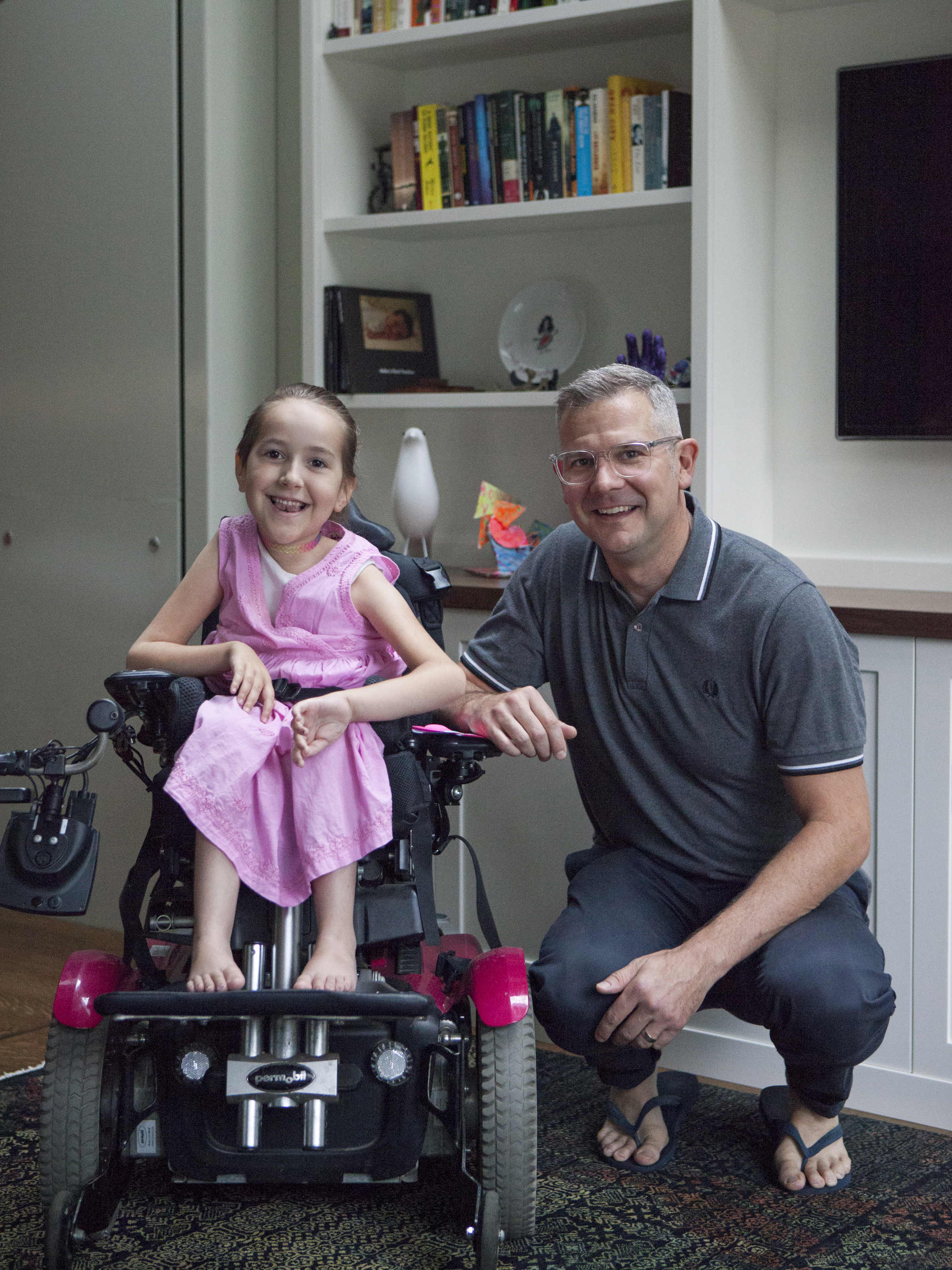
Before Asha was born, I was naive about the broader set of experiences that can happen in families around mobility. That changed following Asha’s diagnosis, when we were told she’d probably never walk. My wife and I left the clinic, with Asha in her stroller, and for me it was like taking off one pair of glasses and putting on another. All I could see were barriers everywhere: curbs, step-ups into stores, traffic, streetcar tracks. And I realized that disability is not just produced in the body. There are also the disabling aspects of the environment around us.
Asha uses a 300-pound power wheelchair and we have a rear-loading disability van. To make it safer and more accessible to transfer Asha from our house to the van or to a school bus, we had to negotiate with the City of Toronto to have our front yard redeveloped, at our expense. It took two years – two years! – to get a license for front pad parking on our own property. Even on the city’s application form to change your front yard parking, there’s nothing that talks about disability. That’s a problem.
Asha sings in the Young Voices Toronto children’s choir and they do performances at Trinity-St. Paul’s United Church on Bloor Street West. When we took her recently to the dress rehearsal, there was a guy without a permit sitting in his car in the disability parking space. There’s barrier number one. We had to ask him very nicely to leave, and you know that conversation could have gone one of two ways. Fortunately he moved on and we parked there. But then I had to unload Asha. So she backs out of the van, then she has to drive a short distance against the flow of traffic, then she has to cross the bike lane against the oncoming bikes. It’s hair-raising!
I’m an avid cyclist myself and I like that the city is having a conversation about drivers and cyclists sharing road space. But I also look at that process from the perspective of a transportation researcher who has a child with a mobility challenge. In my graduate seminar last year, we considered what a bicycle network looks like when it’s planned inclusively; we concluded that the city could do a better job. There are ways to use design – road geometry, surface texture and paint, signage, curb cuts and the placement of parking close to destinations – to reduce the risk of collision or conflict between cyclists and others trying to cross bike lanes.
In her power wheelchair, Asha is legally considered a pedestrian. She even uses words like “walking” and “running” when she’s driving her power chair. That’s fascinating to me because we have ideas about what walking is, and she challenges those ideas entirely. When she “runs,” she’s going full speed in her chair. I can’t keep up with her.
In one research project, we asked children with mobility challenges to take photos of what they saw as barriers in their environment that make it hard for them to get around. Asha took a photo of a carpet, which sometimes gets caught up in her wheels. So it doesn’t have to be a massive change to make a meaningful difference.
Other challenges are more difficult to address. My daughter Meera, who’s 10, goes to a school that’s 450 metres from our home, but it’s totally inaccessible. Asha’s school is more than three kilometres away. Meera is doing band and choir and a range of things that our family goes to. The gym in that school is upstairs and there’s no elevator, so we carry Asha in her stroller up two flights of stairs. We can do that maybe another year. It’s crazy. It’s also not totally safe.
I haven’t come across any city that’s an accessibility utopia, but I see interesting examples in different cities. At the National Children’s Forest in California, thousands of feet up, there’s a paved hiking trail. If you were talking to a 1980s version of me, with long hair and super-fixated on the environment, I would have been opposed to a paved hiking path at the top of a mountain. But now, wow! This was amazing. It gave us an opportunity as a family to go for a hike.
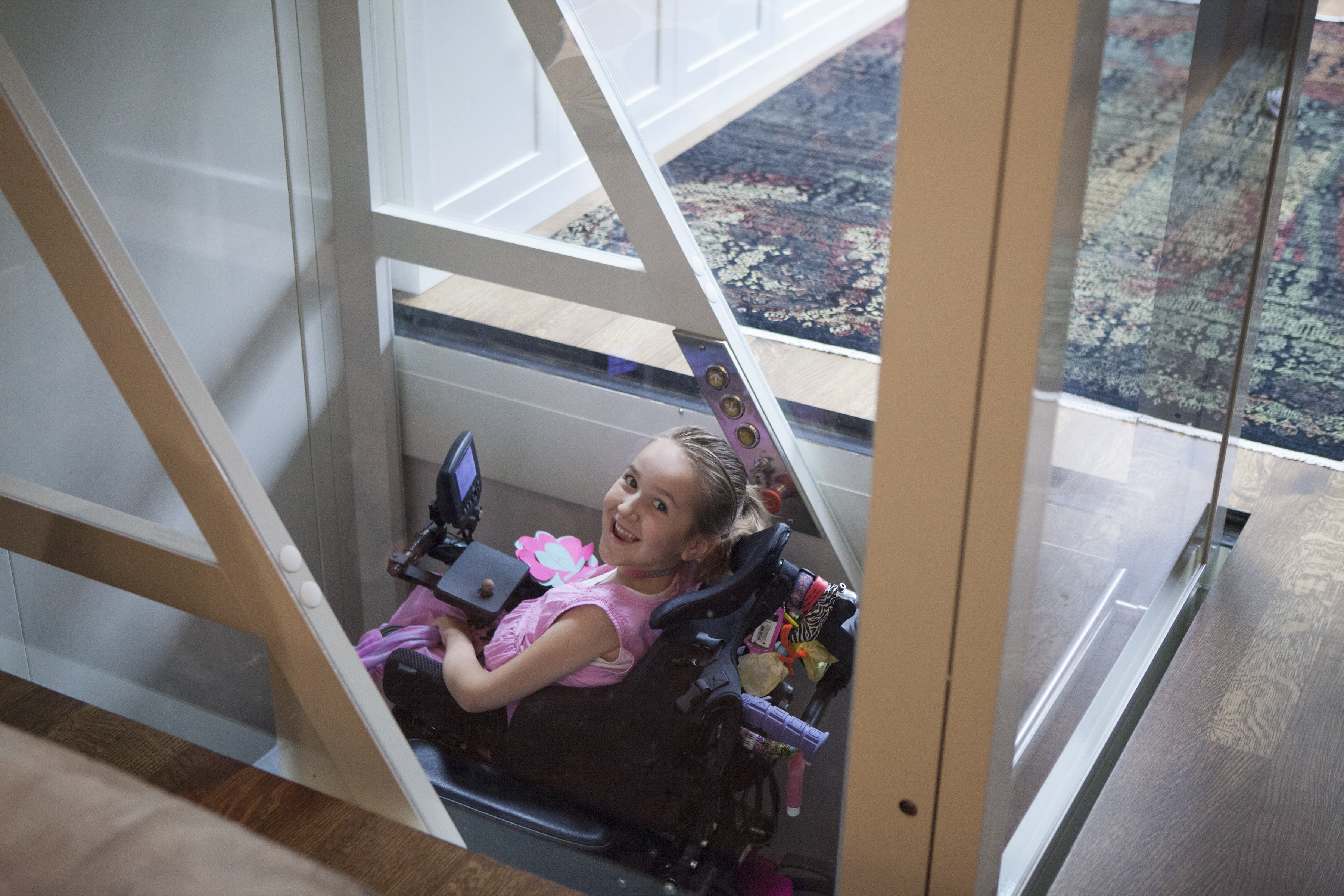
In the summer, Asha went to a day camp at the Royal Ontario Museum. I would have brought her there on the subway but High Park station, where we live, and Museum station don’t have lifts. If a TTC station is accessible – and that’s a big if – could Asha even press the elevator button? Probably not, especially if it’s high up, because she’s profoundly weak and it takes a lot of force to press a tiny button. We live in a world of touch technology, so why don’t we have buttons like that?
Barriers can be things we see, but they can be unseen as well. At ROM camp, Asha’s group would eat lunch down in the depression near Philosopher’s Walk. But it was too dangerous for Asha to drive her chair down there, so she had to eat at the top with the younger children. We wanted her to eat with her peers, so we were thinking: we can either figure out how to get Asha safely down there, or maybe we could suggest to the counsellors that the children come up and eat with her. It was a simple way of turning that on its head. It’s an uphill battle – literally!
My wife is a physician, and we realize we have massive amounts of privilege in terms of income, flexibility in our schedules and access to resources. But that also brings responsibility, so how do we use that privilege and access? For me, it’s partially about bringing these experiences into my research and teaching. What concerns me is, what’s happening to another Asha who doesn’t have this web of privilege and resources around her? So now every time I go out and work with an institution on transportation, I need to be the person in the room who raises questions around accessibility. I can get kind of annoying, which is good.
Broadly speaking, my research asks the question: What does a city without barriers look like and how do we get there? I have some upcoming research that will look at inclusive play in childhood; my family has experienced the disappointment of inaccessible playgrounds. And I’m also very interested in working with teenage youth with disabilities – that is, people who are gradually aging out of pediatric systems of care and headed toward the greater complexity and resource challenges in adult health care. Families with older children have told me the transitional experiences are hell.
Asha herself gives me hope. I can fight and advocate for change, but I don’t want to lose sight of the amazing, intelligent, powerful person right in front of me. One morning when I dropped her off at the ROM camp, the other kids were a little farther ahead and the door closed and she couldn’t press the button to get in. So she just used her voice and yelled and someone came and opened the door. She figured it out.
I’m hopeful that my teaching and research will encourage the next generation of scholars and planners to put accessibility higher up on the laundry list of things we consider when we design and build cities. Also, for those of us who don’t have a disability now, that can change at any time. I think that’s something people forget.
Disabling Things
Sure, stairs are impossible for someone in a wheelchair. But what about all the less obvious obstacles? In 2016, Prof. Ron Buliung and his PhD student Tim Ross enlisted children with mobility challenges aged five to 13 to take pictures of things that they liked and disliked about their trip to school, from inside the home to the school property. Below are some of the things they didn’t like.
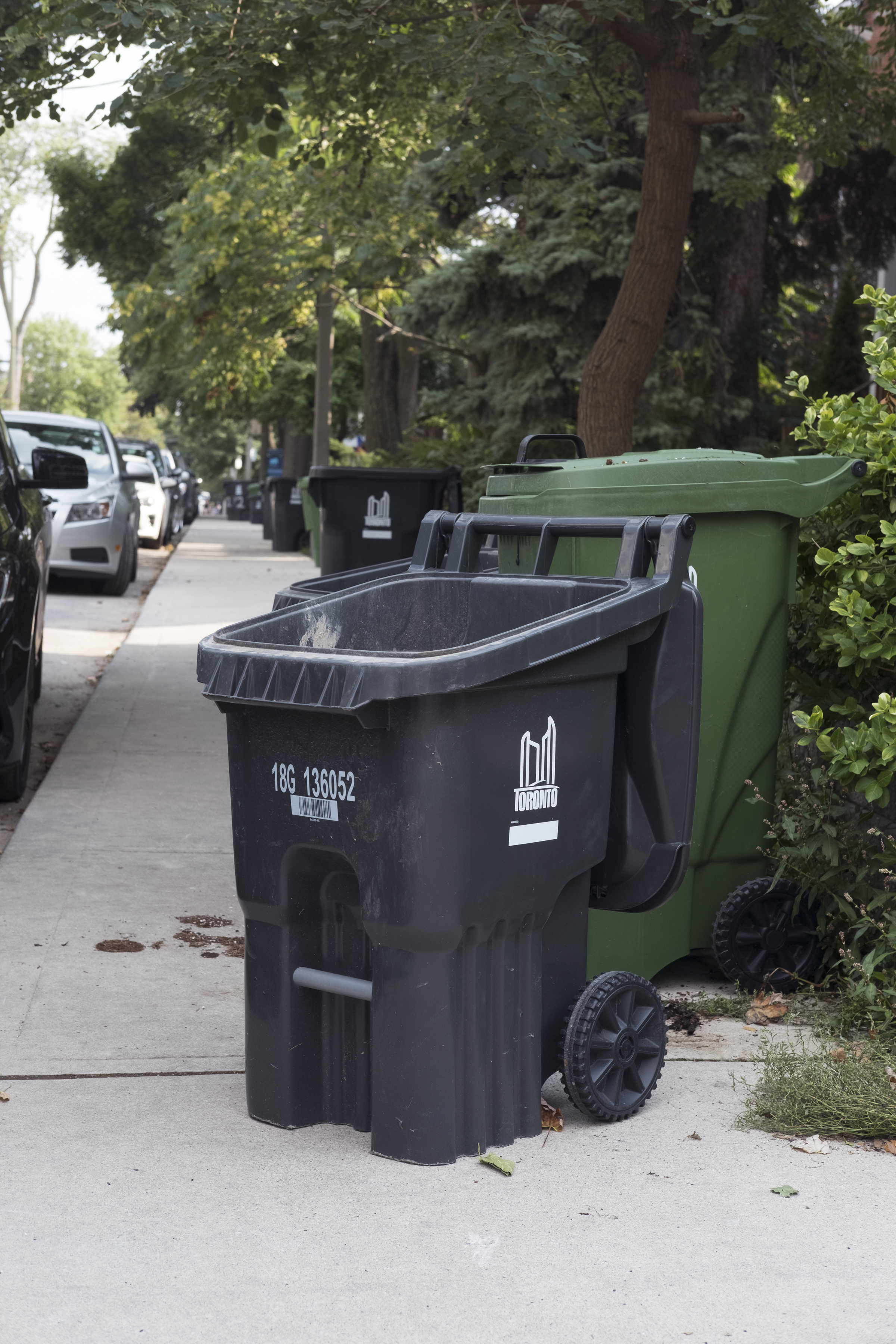
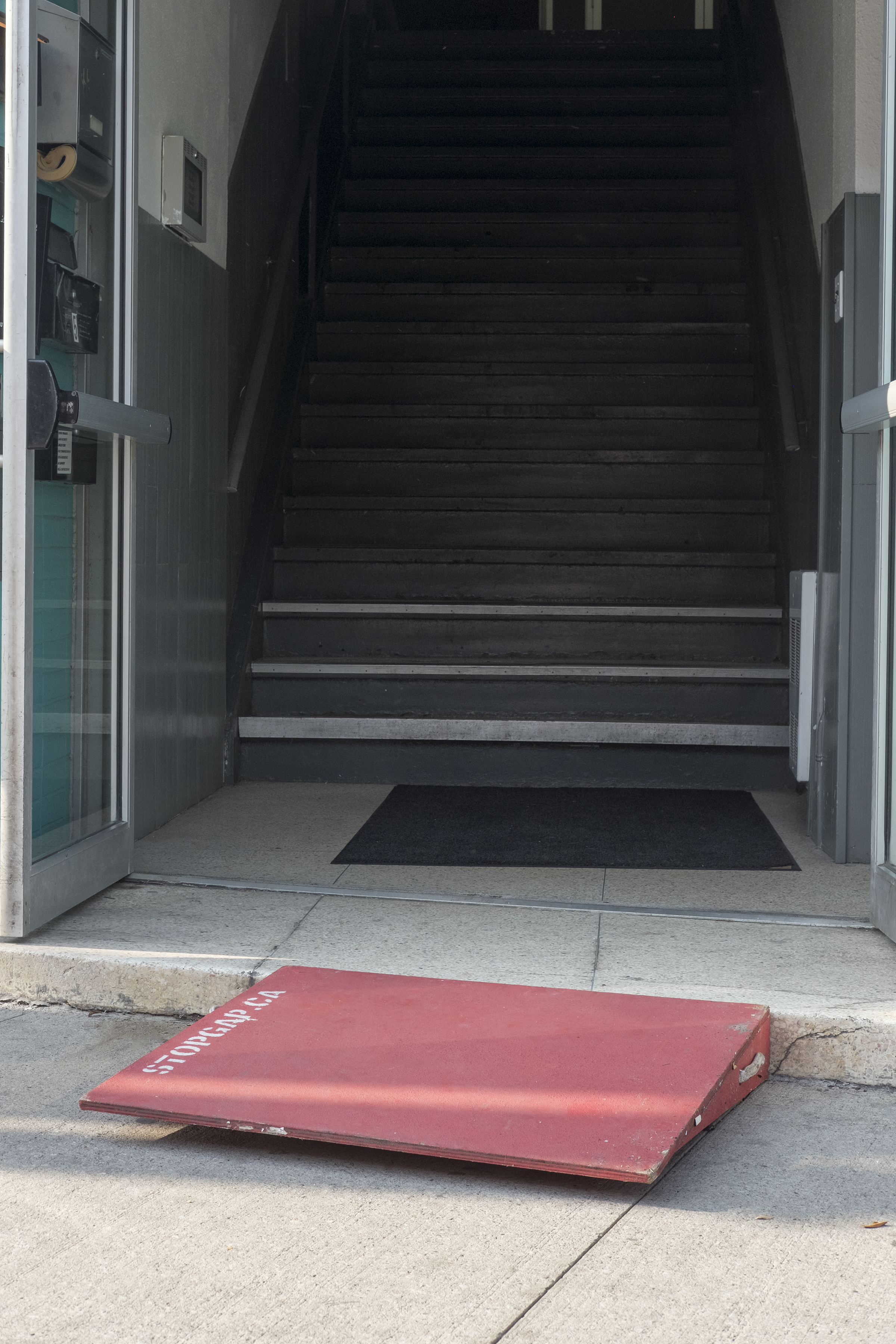
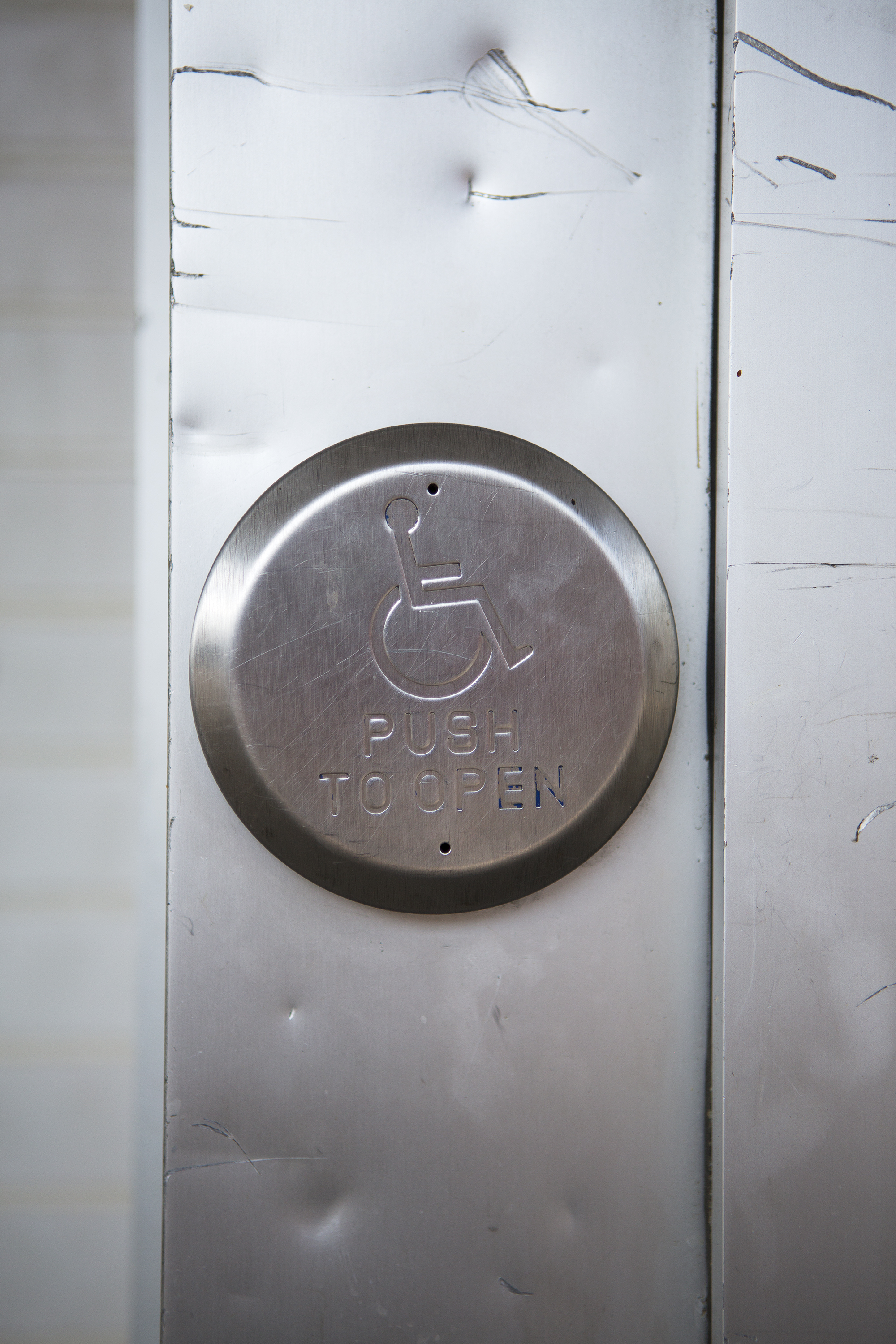
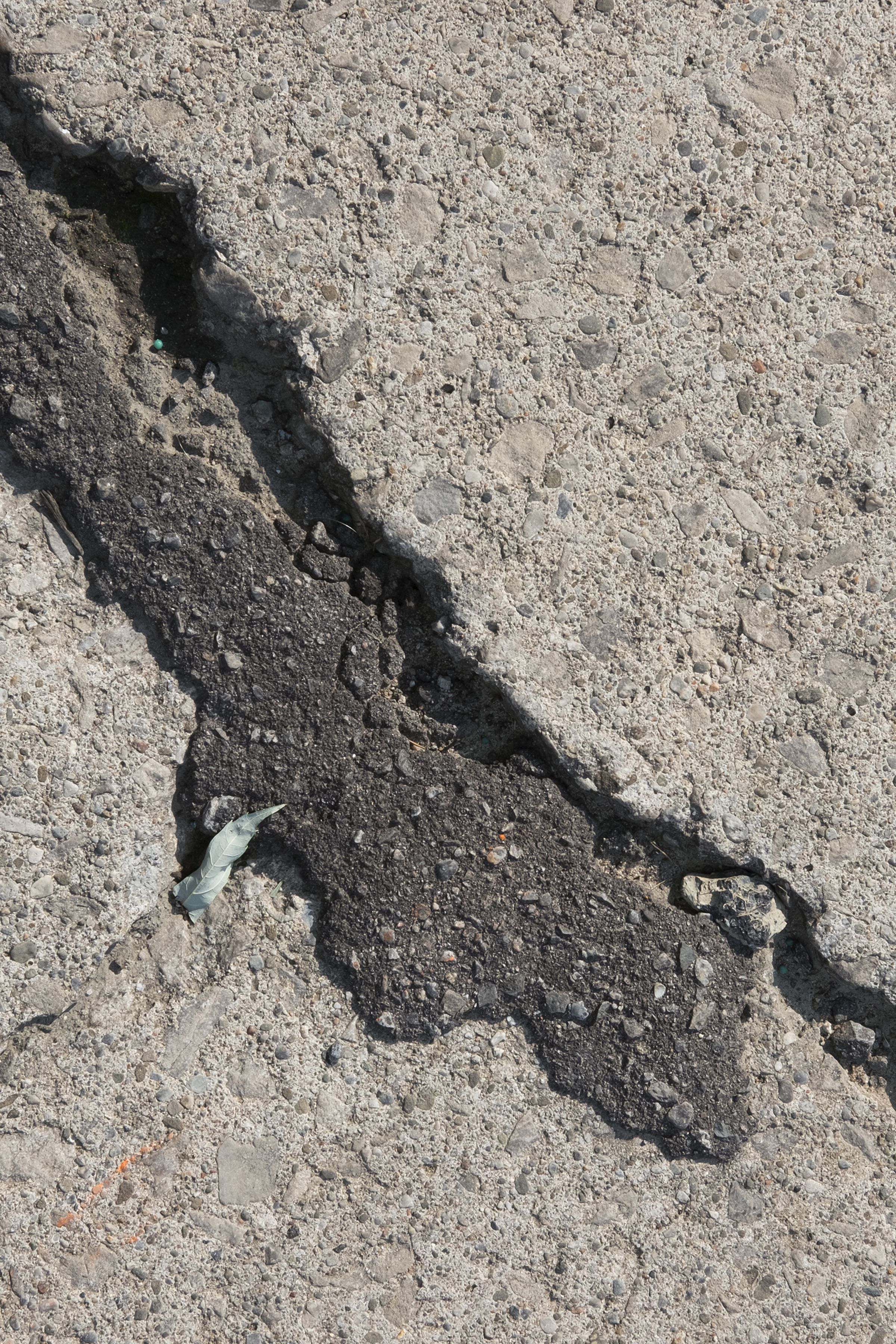
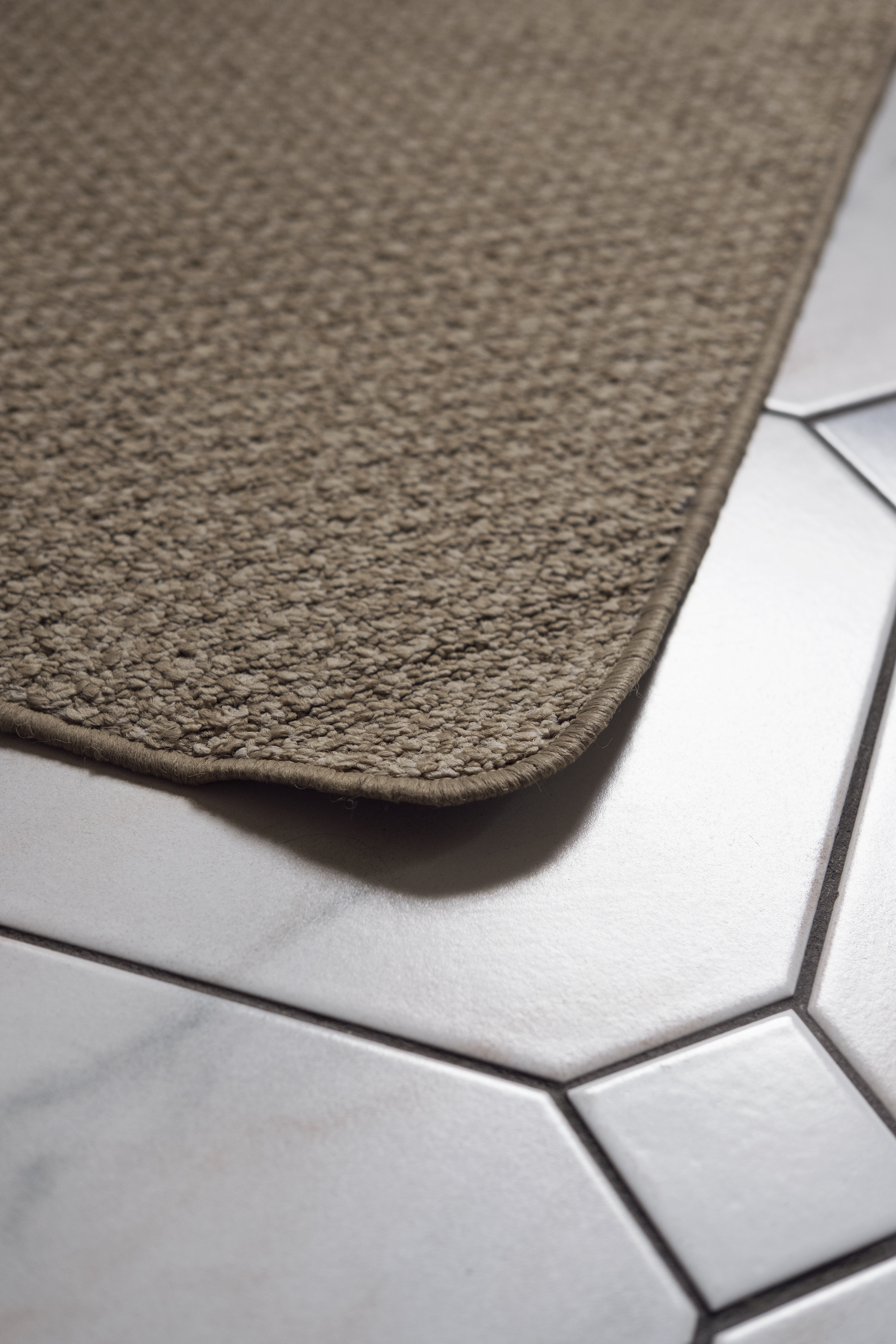
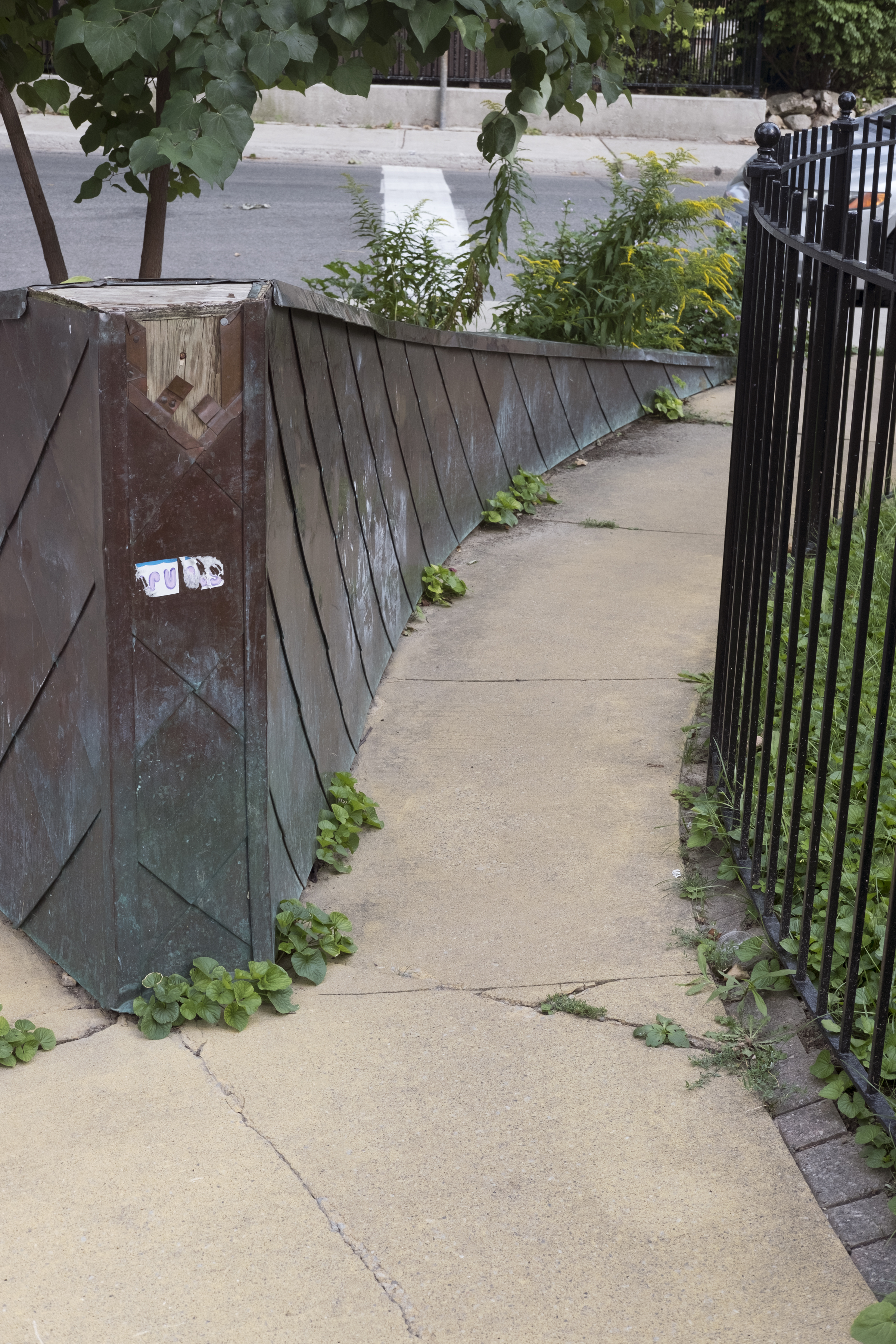
1—After garbage collection, navigating a wheelchair along the sidewalk can be impossible. The city owns part of everybody’s frontage, so they could cut a piece into the property and have a pad put there for the cans, says Ron Buliung. “If we made that change, anyone with a walker, a cane or pushing a stroller wouldn’t be further disabled.”
2—The flaw here, says Buliung, is not with Stopgap, the organization that makes the portable ramps. The real problem is in identifying who’s responsible for ensuring that there’s no step from the sidewalk to the storefront in the first place. Whose responsibility is it to correct environments that straddle the private and public spheres? And how do we make change happen?
3—The button that can help may become the button that doesn’t, particularly when placed at an inappropriate height, or when it requires excessive force or fails to work at all. We live in a touchscreen world, says Buliung. “We can do better.”
4—Broken sidewalks, cracked pavement and uneven surfaces pose a risk to people of all ages using mobility aids. In this case, the temporary fix may have made things worse, says Buliung, by further altering the elevation of the fractured surface.
5—Any loose mat or piece of carpeting can pose a hazard for a motorized wheelchair, says Buliung. The material can get bound up in the wheels and is impossible for a child to remove. (It’s difficult for an adult.) Obstacles can be almost invisible, he says, yet easily fixed in some cases.
6—Narrow walkways place a burden on wheelchair users, who must question if the space is passable, and navigate in the presence of other pedestrians. Tight, crowded spaces can also pose a danger to children with certain bone diseases, who could suffer a fracture if they’re inadvertently pushed or knocked over by other pedestrians.


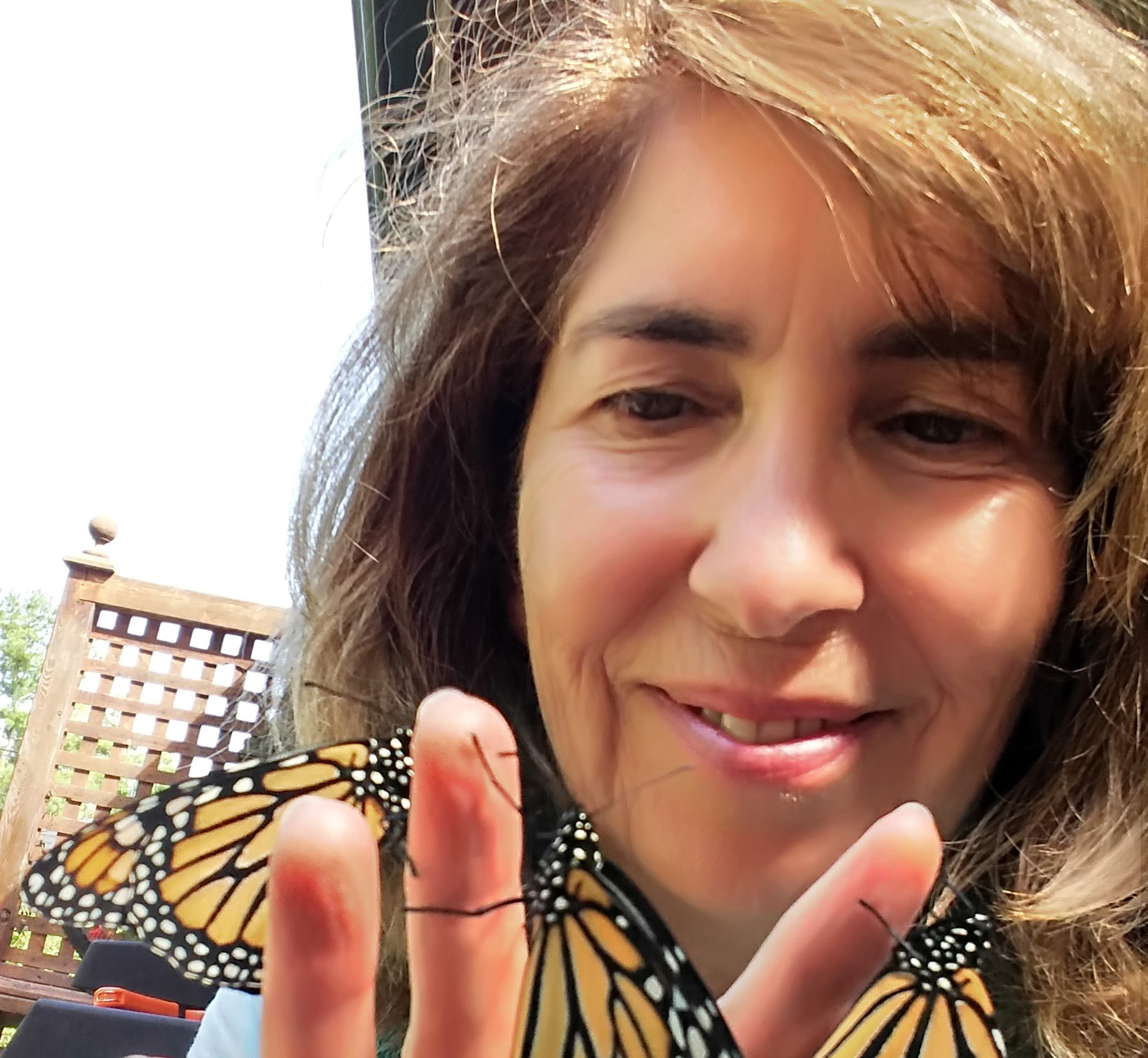
6 Responses to “ Toward a City Without Barriers ”
Please help disabled veterans next, we're absolutely desperate.
This article is an eye-opener as much as it is timely. It points to a general problem, or rather to a set of issue, with rules and procedures. Ron mentions how the application form for front yard pad parking contains no entry regarding disability. This is an excellent illustration of the nature of the issues. There are countless other examples: cutting down nonviable trees; scaffolding on sidewalks; committees of adjustment and minor variances, and so on. It seems that what is needed is to start embedding into our rules and regulations a series of clear provisions regarding flexibility and fine-tuning; to move away from rigid "rules-plus-exceptions" to flexible rules that already anticipate a range of different, and equally legitimate, situations.
From Sarah Pollichieni, MEd 2017, Woodbridge, Ontario
Prof. Ron Buliung’s story about his daughter Asha resonated with me beyond words. Like Asha, I have spinal muscular atrophy type 2. The lack of accessibility in the city has been a huge and constant barrier in my life. I applaud Prof. Buliung for teaching his daughter from an early age the importance of advocating for herself and making her needs known to others. This is something I didn’t fully learn until a few years ago.
From Geoff Rytell, BEd 1975, Toronto
While I do not use a wheelchair, I have had a fair amount of experience pushing them and can attest that barriers, even small ones, must sometimes feel like mountains to people with disabilities. In addition to broken sidewalks, as Prof. Buliung notes, there are difficulties when curbs don’t smoothly connect to roads. Even a one-inch ridge can be a problem because of the small front wheels. So I have to turn the chair around and use the large back wheels to back up onto the sidewalk. Yet another foe is snow, especially the hard-packed icy variety. I remember being unable to negotiate an unplowed alley – even backwards, so I popped into a local fire hall to borrow a shovel. I don’t want to think about how hard it must be to deal with these things without an attendant’s help. Whenever I see a car carelessly blocking a sidewalk, I’ll knock on the nearest door and try to get it moved.
From Ravi Malhotra, SJD 1997 (Doctor of Juridical Science), Ottawa
I am a full professor now at the University of Ottawa and have been disabled since birth. As a law student at U of T in the 1990s, I found that the university has tremendous physical barriers, though I likely faced fewer than someone doing a BA, who would have had to travel across campus between classes. I remember having to lobby to get the university to change the rule stating that students could not return books at any library. I do hope that Prof. Buliung will encourage the hiring of disabled faculty. This is the single most effective thing he could do with his position.
From Sharyn Devine, BSc 1964 St. Michael’s, MEd 1982, Toronto
Thank you for this article. People with disabilities have been invisible too long. There is no law in Ontario requiring that any housing be fully accessible. The much-vaunted AODA (Accessibility for Ontarians with Disabilities Act) applies only to large places of business, and does not mention housing. The Ontario Building Code requires that only 15 per cent of new apartments and condos be “visitable” – not accessible enough to live there – and even this law is not enforced. Yet the cost of building fully accessible housing is less than one per cent more than conventional construction, when incorporated from the planning stage and, for example, including wider doorways and wheelchair-accessible washrooms.
A Toronto non-profit organization, Unitarian Commons, aims to build a condo designed to be fully accessible so that anyone of any age or ability can live in any of the units. Designed as co-housing, it will encourage community among the residents, who will share some meals and activities in the common space, while also enjoying the privacy of their own units. People of all backgrounds, all ages and all abilities are welcome.